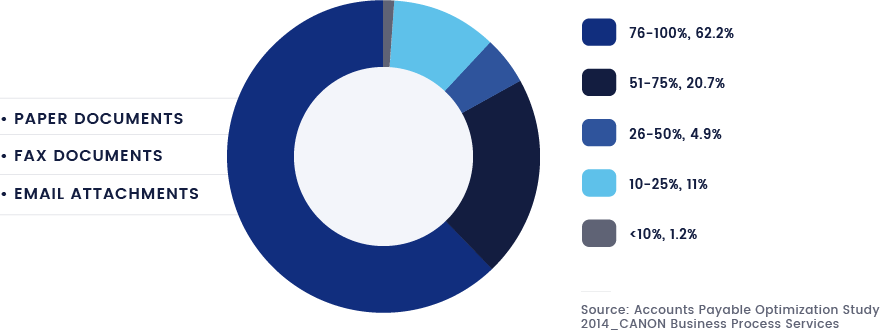Streamline Accounts Payable with an integrated RPA solution
The vast majority of invoices (at least in the U.S.) arrive as paper documents, fax documents, or PDF email attachments. Few are alike, so manual handling is tedious. Is it from an approved vendor? Does the PO match the ERP system? The AP staff must find the answers.
The AP staff also manually transfers data from the various invoice formats into the company’s standard format. This repetitive task is slow and prone to errors. What initially appears to be a series of straightforward AP activities reveals itself to be a complex and inefficient process. Optimizing it would easily translate into a financial and organizational reward.
The manual process extends to resolving discrepancies. For example: “Is there a bill of lading for the PO? Does the invoice price match the PO?”. Also, approvals: “Have the required documents been assembled and queued for payment authorisation?”

Invoice capture is processed with OCR technology to 95%+ character level accuracy from a scanning device if the invoice is
The accounts payable automation solution addresses the business logic that is behind complex P2P processes with highly configurable workflow rules. This enables intuitive and effective end-to-end automation for two or three-way document matching, ERP system reconciliations and branching flows for special items such as non-PO invoices.
Approval activity is streamlined in the AP solution by rules-based, auto-approved, workflow criteria that limits human involvement to specific approval situations. Exceptions are triggered by data that does not conform to automated workflow criteria for routing, matching and circulation actions. UiPath minimizes exception resolution by following well-defined redistribution rules that are designed to identify and escalate exceptions to the right skill sets. The solution also uses live monitoring to flag exception points for rule reviews and fraud detection.
The UiPath accounts payable automation solution embeds compliance and governance controls, such as
The UiPath AP solution delivers flexibility and adaptability benefits. Changes in transaction volumes from growth, acquisition or consolidation are easily accommodated without compromise to performance or accuracy. Real-time performance monitoring and documentation facilitate new analytic or predictive capabilities requirements.
We're always here to help you on your RPA journey, in any way we can.
Contact sales